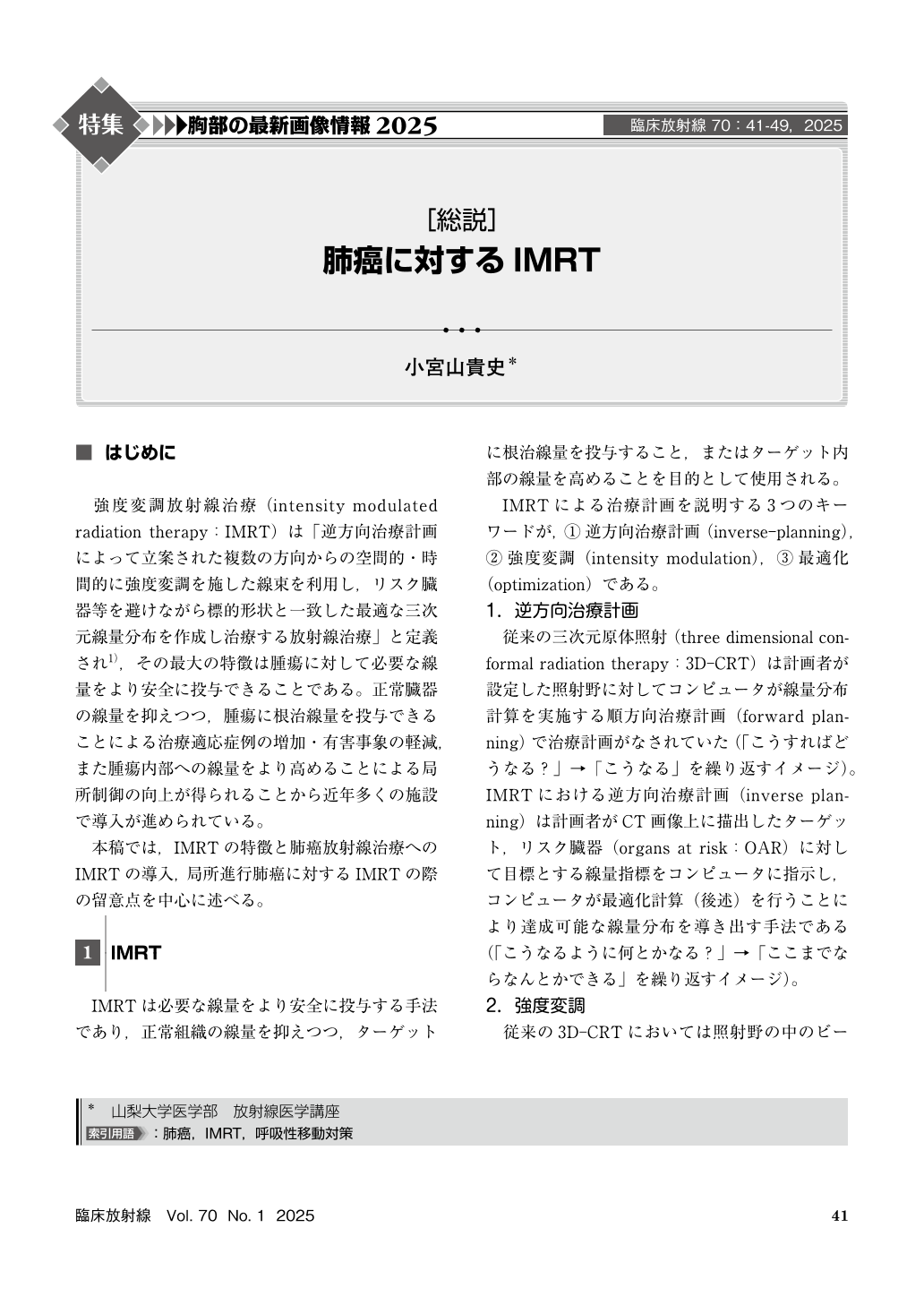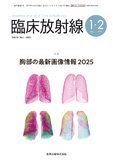Japanese
English
- 有料閲覧
- Abstract 文献概要
- 1ページ目 Look Inside
- 参考文献 Reference
強度変調放射線治療(intensity modulated radiation therapy:IMRT)は「逆方向治療計画によって立案された複数の方向からの空間的・時間的に強度変調を施した線束を利用し,リスク臓器等を避けながら標的形状と一致した最適な三次元線量分布を作成し治療する放射線治療」と定義され1),その最大の特徴は腫瘍に対して必要な線量をより安全に投与できることである。正常臓器の線量を抑えつつ,腫瘍に根治線量を投与できることによる治療適応症例の増加・有害事象の軽減,また腫瘍内部への線量をより高めることによる局所制御の向上が得られることから近年多くの施設で導入が進められている。
Since the publication of the PACIFIC trial, demand for IMRT has increased, especially for stage Ⅲ non-small cell lung cancer. Concerns regarding the introduction of IMRT for lung cancer radiotherapy include:poor reproducibility of accurate dose distribution due to respiratory motion, increased incidence of severe radiation pneumonitis due to expansion of the low-dose irradiation area, and increased recurrence due to decreased incidental irradiation dose for unintended lymph node site. Each of these concerns has been overcoming by advances in theory and technology, as well as by the accumulation and analysis of data, and IMRT for lung cancer is becoming more widespread. To mature the treatment, it is necessary to tailor the treatment to each individual case and to follow up after treatment.

Copyright © 2024, KANEHARA SHUPPAN Co.LTD. All rights reserved.


